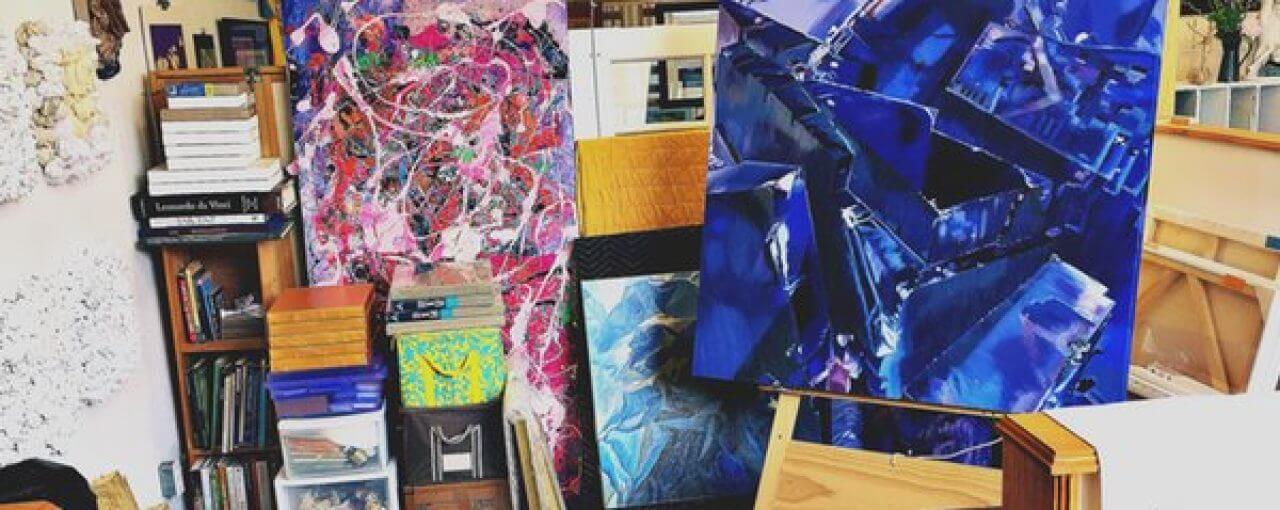See Hedden’s work in WTP Vol. VI #5.
Inside the Studio offers a behind-the scenes peek into the work environments of WTP artists, as well as insight into their creative process within these resonate spaces.
By Jennifer Nelson, WTP Feature Writer
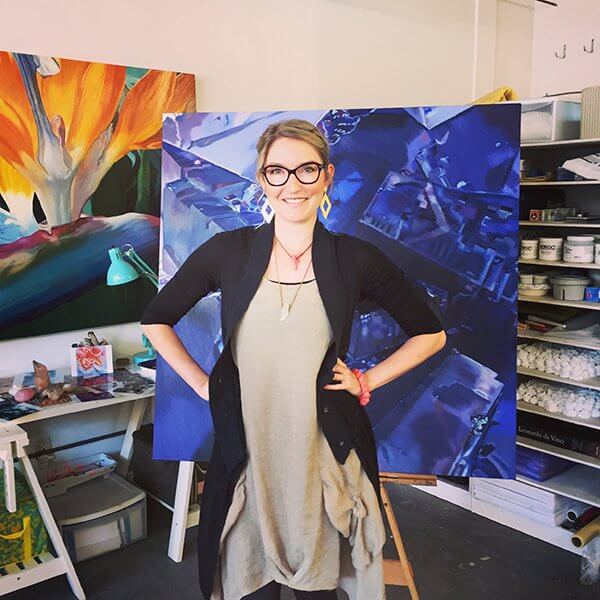
Chloe Hedden loves her Boulder, Colorado, studio. It doesn’t matter that it’s small and in a shared workspace. Key is that it has great, north light—the best type for painting—and it’s quiet. It’s also big enough to accommodate large easels and canvases. “I think of it as my playpen,” she says.
Her studio is often messy due to the fact that she utilizes many materials and processes. Nevertheless, she tries to keep it organized, and prefers it when it’s clean. “But when I’m really working, it’s in chaos.”
She dreams of working in a big studio one day, where she can really spread out. In a studio so small, she can’t easily check proportions; it’s difficult to back far enough away from the painting. But in August, she will be moving to Moab, Utah, where her studio will be in her house.
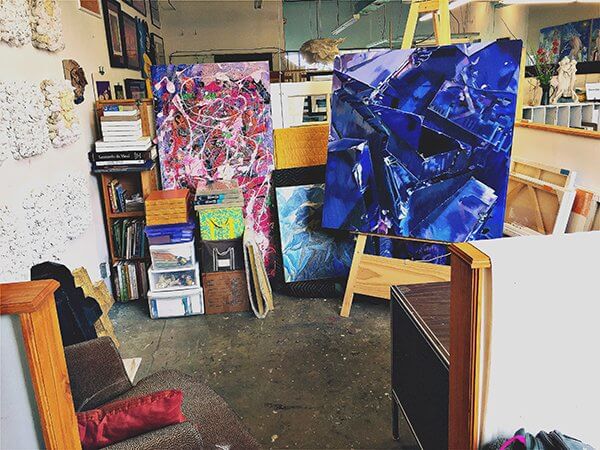
Hedden begins her day by getting up early, meditating, going for a long walk, and eating breakfast, then arrives at her studio around 10:00 a.m. She stays until about 6:00 p.m. The light isn’t good enough for her to paint at night, and in winter, she sometimes uses a full spectrum spotlight to supplement the natural light.
When she begins a work, she gets into a fevered excitement, barely able to sleep, eat, or think of anything else, before she can settle down to fully realize her vision: “It’s equal parts rapture and slow tedious craft. The best is when I’m standing at the easel and I lose track of time—then, it almost feels like someone else is painting. But that is only about 10% of the time.”
Using a rough grid, she starts by drawing a flower or a crystal freehand. She seals the drawing so that the graphite won’t seep into the oil paints. She then paints a small area that she can complete in one day; in the dry arid west, oil paint can take a day to dry. She prefers wet-into-wet brush strokes, and works through the painting in bite-size pieces until it’s done. Finally, she seals it with shellac. “It’s not a classical technique at all,” she says. “I’m breaking all the rules. But I find it’s the best way to get the texture I want.”
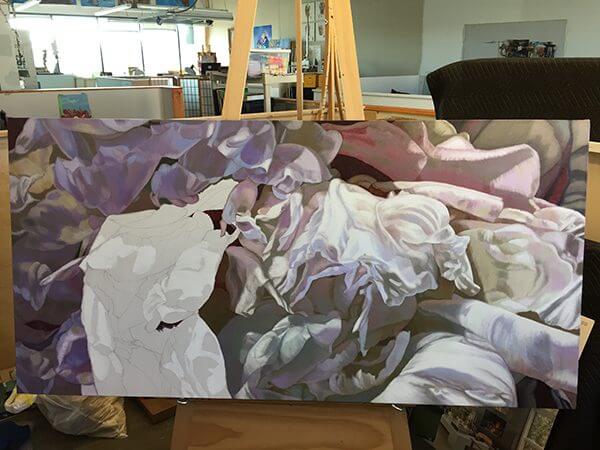
She never paints with more than six colors, and prefers large 4’–5′ canvases. She mainly works from photos, though occasionally a friend will share something with her and she’ll turn it into a painting. By using her own photos, she’s reminded of something that she witnessed in person, and the feel of that moment.
Many of her paintings involve nature, and on her walks, she searches for perfect flowers or crystals. She loves being alone as she listens to birds, and witnesses the changing sky and seasons: “When I feel closer to the earth, I feel closer to myself and the things that only I can hear being whispered from my soul,” she says.
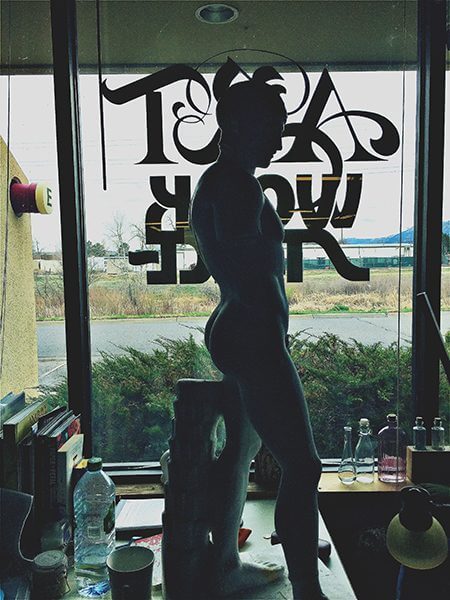
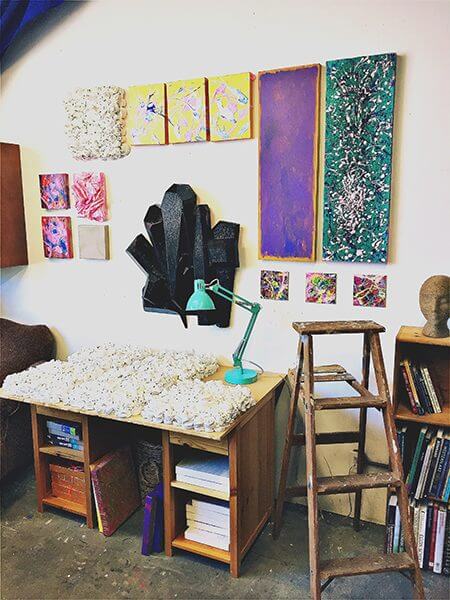
Hedden primarily paints on canvas, though sometimes she’ll splurge and work on linen. She loves Old Holland oil paints, since they have the best pigments. She doesn’t use thinner because it’s toxic; instead, she cleans up with vegetable oil. She prefers stiff bristle brushes that let her push paint around. “It’s a muscular process and each stroke becomes very important,” she says. “I follow the energetic growth pattern of whatever I am painting.”
Her paintings are about light and abstraction. “I may paint flowers or crystals now, but they are just my subjects to convey my love of light and the visual language of abstraction and form,” she says. “I want viewers to be able to dive into my paintings and stay for a while.” Recently, she started some new sculptural works incorporating materials like charred wood, white wash, resin, and gold leaf.
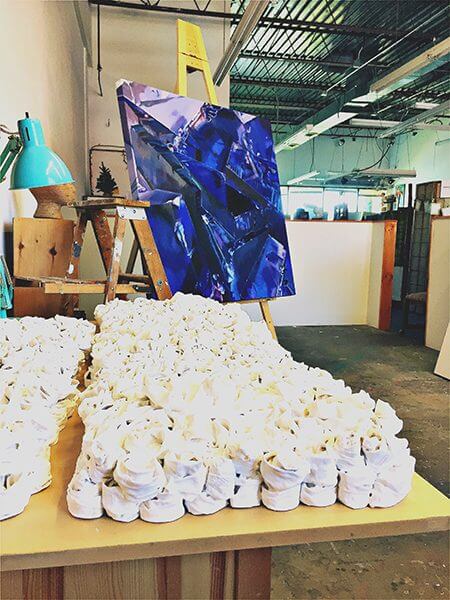
She thinks of her canvas as her therapist. Whatever she’s going through in life gets fused into the work. “There is no hiding from the truth when I sit down to paint,” she says. “All of it comes up. I cry, I laugh. And when I leave the studio, I feel wrung out and refreshed. Life is messy and so is art.”
Copyright 2018 Woven Tale Press LLC. All Rights Reserved.

